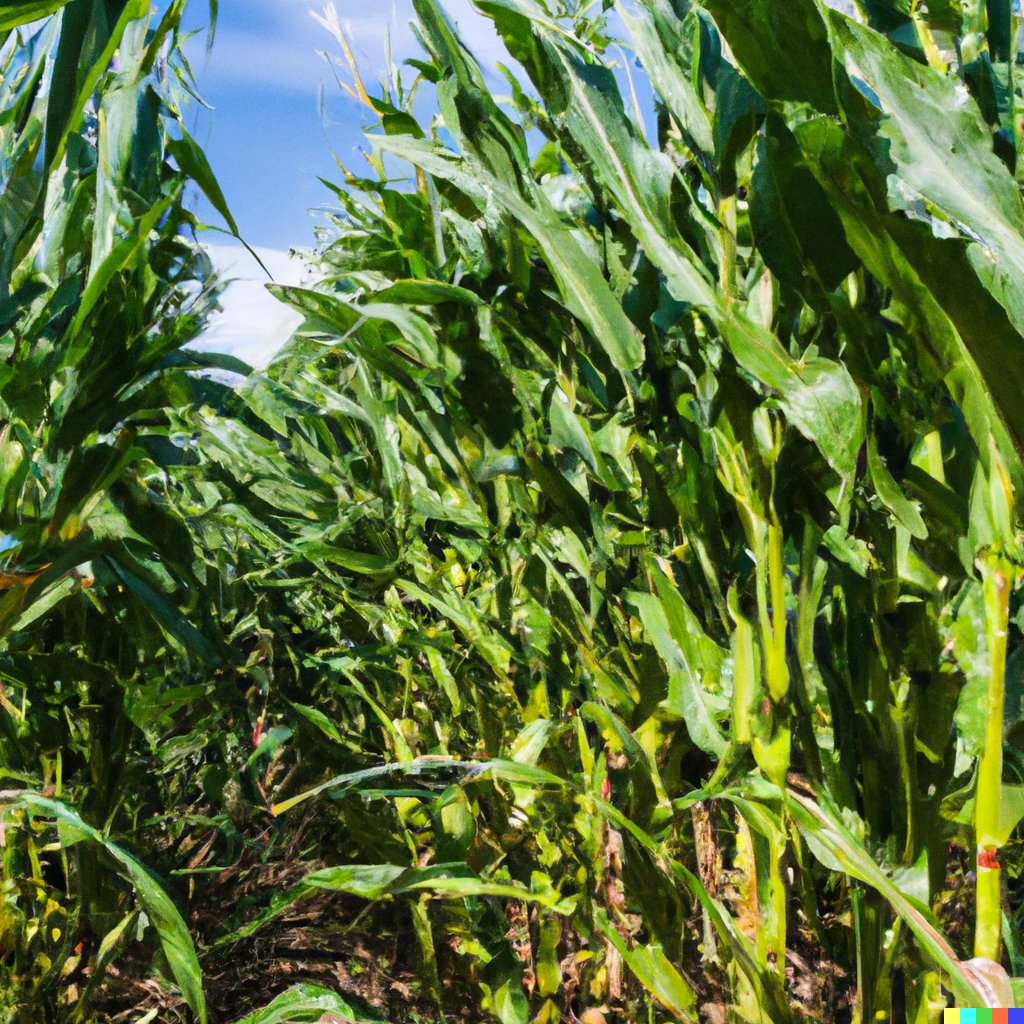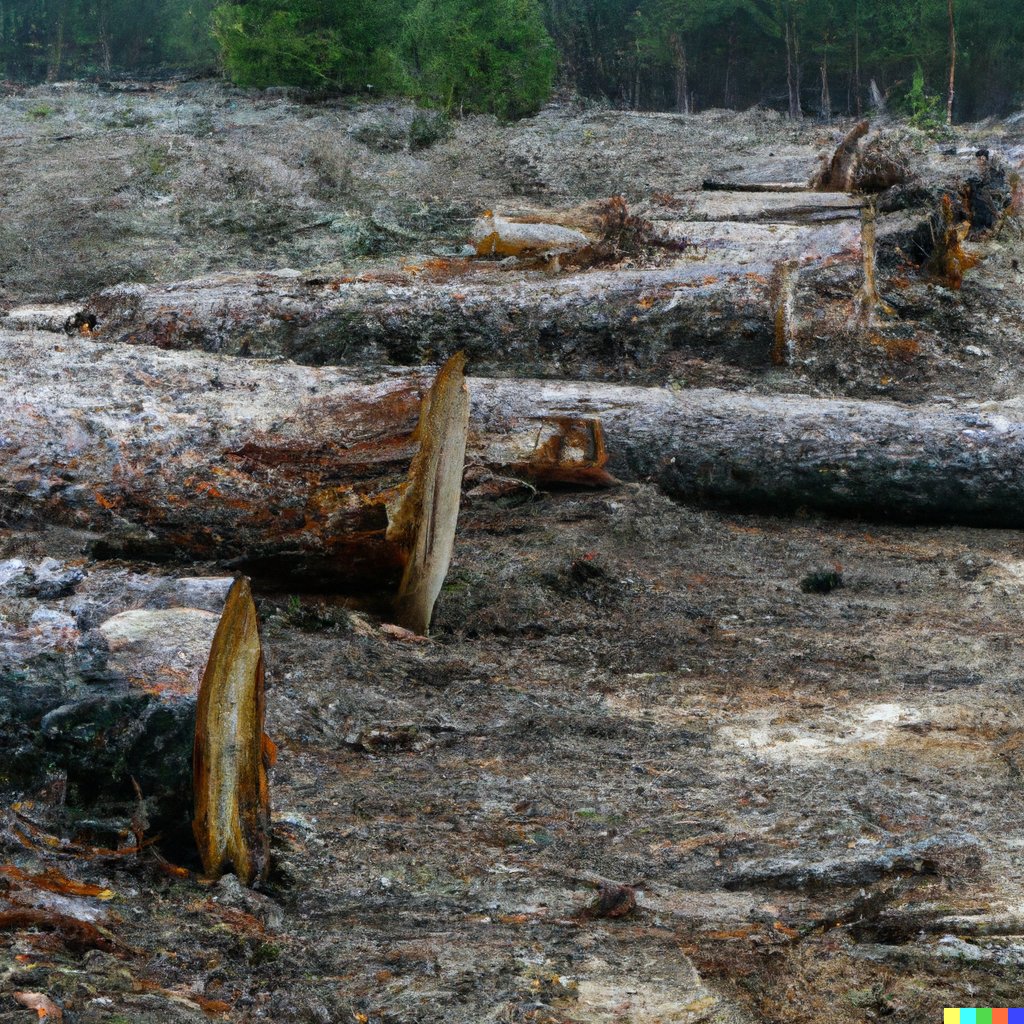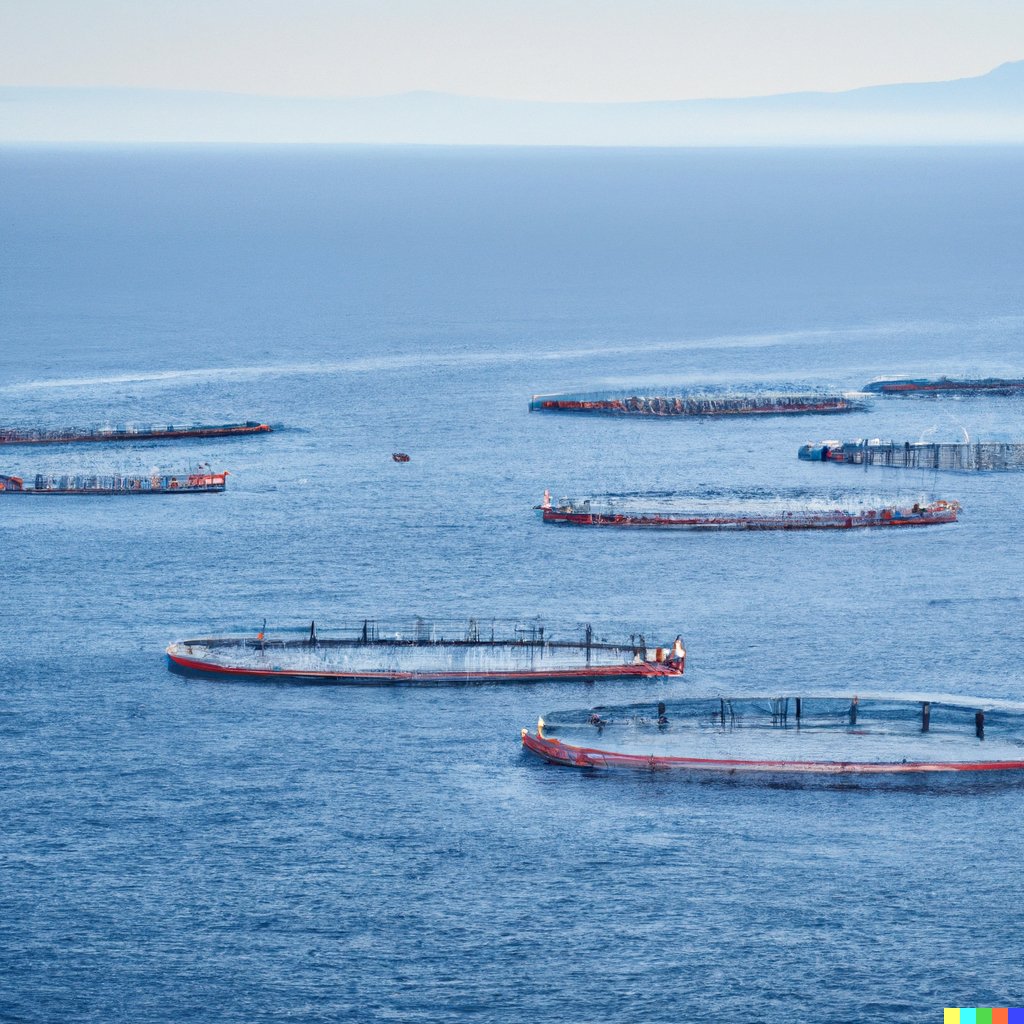
Are you concerned about the future of our food supply and the impact of conventional agriculture on the environment? In recent years, there has been a growing awareness about the need for sustainability and adaptation in agriculture. This article explores the importance of these concepts and offers potential solutions for the future. Come join the conversation and be a part of shaping the future of our food system.
Resource Constraints in Conventional Agriculture
Resource constraints in traditional agriculture are a challenge, like limited land, water shortages, and fossil fuel use. Population growth also adds to the need for sustainable alternatives.
- Land: Urbanization and environmental degradation can shrink agricultural land.
- Water: Water scarcity and poor management can be a problem.
- Fossil Fuels: Machinery, transportation, and chemicals all depend on fossil fuels.
- People Resources: Availability of skilled labor for farming operations can also be an issue.
To tackle these challenges, precision farming techniques, crop diversification and rotation, agroforestry integration, improved water management, and renewable energy sources can be adopted. This will ensure long-term productivity and environmental stewardship.
But hey, traditional farming practices may have a hefty environmental footprint, but at least they make organic kale taste like regret and pesticide runoff!
Environmental Impact of Traditional Farming Practices
Traditional farming practices have a huge effect on the planet. Soil erosion, deforestation, and greenhouse gas emissions are all part of the package. It's time to review these practices and ensure sustainability for future agriculture.
Intensive tilling and poor land management can cause soil erosion, leading to the loss of valuable topsoil and decreased agricultural productivity. Additionally, clearing forests to create more farmland contributes to climate change by reducing carbon sequestration.
Traditional agriculture is also a major source of greenhouse gases. Heavy pesticide use and synthetic fertilizers release harmful gases into the atmosphere, worsening global warming and climate change.
We need to adapt our practices to reduce these environmental impacts. Conservation farming methods like cover cropping and no-till farming can help limit soil erosion and improve soil health. And organic farming can limit deforestation by promoting sustainable land use.
Using alternative pest control methods like integrated pest management can reduce pesticide use and lower greenhouse gas emissions.
It's up to farmers and policymakers to take action and protect our planet's ecosystems. Mother Nature is giving conventional agriculture a taste of its own pesticide with climate change - let's act now before we lose our chance for change!
Effect of Climate Change on Agriculture
Climate Change's Impact on Agricultural Practices
Extreme weather events are disrupting planting and harvesting schedules, leading to crop losses and reduced productivity. Precipitation patterns are changing, causing droughts in some areas and excessive rainfall in others. Both are a challenge for crop growth. Rising temperatures are also affecting crop growth and development, reducing yields and altering pest and disease dynamics.
Changes in climate are causing shifts in plant and animal populations, impacting pollination services, natural pest control, and ecosystem health. Farmers need to adopt new strategies to adapt to the changing conditions. This includes implementing new irrigation techniques, selecting resilient crop varieties, and adjusting planting dates.
Climate adaptation is becoming crucial to ensure food security for a growing population. Research and innovation are needed to develop sustainable farming methods that minimize environmental impact and maximize productivity.
In some parts of the world, farmers are already feeling the effects of climate change. For example, in an African village, the regular rainfall patterns that sustained generations of farmers have become increasingly erratic. This has caused failed harvests and food shortages.
In response, farmers are joining forces with international organizations to implement sustainable agricultural practices suited to the new climate reality. This includes rainwater harvesting, agroforestry, and conservation agriculture. These efforts not only promote sustainability but also build community resilience against future climate uncertainties. Intensive farming is now like a box of chocolates, with flavors disappearing faster than you can say 'biodiversity'.
Biodiversity Loss in Intensive Farming
Intensive farming has severe implications for biodiversity loss. Decreased agricultural diversity and ecosystem effects are key outcomes of this farming approach. The following table reveals the magnitude of biodiversity loss from intensive farming:
| Habitat destruction for wildlife | Fewer crop pollinators | Reduction in soil health and microorganisms |
| Contamination of water sources | Excessive use of pesticides and herbicides | Destruction of natural scenes |
These scary figures stress the necessity of taking action to protect biodiversity. Intensive farming has far-reaching impacts that go beyond our current comprehension, impacting delicate ecosystems and compromising the long-term sustainability of agriculture. A famous event linked to biodiversity loss is the decrease in populations of species such as bees, butterflies, and birds due to the abundant usage of pesticides and herbicides in intensive farming. This incident shows the interconnectedness between farming practices and their effects on diverse plants and animals, pushing us to look for alternative ways that put productivity and preserving biodiversity in harmony.
Water Scarcity Challenges in Agriculture
Water scarcity in agriculture has become a major issue due to climate change. Irregular precipitation and prolonged dry spells have made traditional practices unsustainable. To tackle this, farmers must use efficient water resource management strategies. This includes rainwater harvesting, wastewater reuse, and controlled irrigation systems. Additionally, innovative techniques should be implemented to minimize water usage while maximizing crop growth and productivity.
Adaptation and innovation are key to overcoming water scarcity. Ancient civilizations like Mesopotamia used advanced irrigation techniques to create thriving agricultural systems that sustained their societies. This precedent shows us how to address the same challenges today, providing a secure future food supply for growing populations.
Addressing Food Security Through Agriculture
Advancing Food Security: Innovative Agricultural Approaches
Agriculture is essential for global food security. We can tackle food production challenges with creative solutions and sustainable practices.
| Solutions | Impact |
|---|---|
| Precision agriculture | More crop yield and resources |
| Agricultural research | Resilient crops & improved farming |
| Agricultural infrastructure | Better storage & transport, less post-harvest loss |
| Modern technology | Knowledge & tools for farmers to increase productivity |
These solutions promote a more sustainable future, by tackling food security issues with innovative agricultural strategies.
Did you know? In the last century, improvements such as mechanization, the Green Revolution, and biotechnology have greatly boosted agricultural output, helping improve food security globally. The future of agriculture has changed - from pesticide-filled produce to eco-friendly farming. It's like a caterpillar transforming into a butterfly, but without all the leaf-munching!
Transition to Sustainable Agricultural Practices
Sustainable Agriculture Practices: A Path to a Greener Future.
Making the switch to sustainable ag practices is essential for our food system's future. Through organic farming, agroforestry, and precision agriculture, we can guarantee the industry's sustainability and resilience for the long-term.
A 4-Step Guide to Embrace Sustainable Agricultural Practices:
- Implement Organic Farming: Substitute chemical pesticides and fertilizers with organic versions for improved soil and biodiversity.
- Adopt Agroforestry Techniques: Mesh trees, crops, and livestock cooperatively to enhance ecosystem services and yields.
- Embrace Precision Agriculture: Use advanced tech like drones and sensors to cut down on waste, optimize resources, and increase efficiency.
- Foster Food System Resilience: Develop local food networks, back small-scale farmers, and prioritize variety in crop production for a more resilient food system.
To further promote sustainability in agriculture, it's important to:
- Research and develop innovative solutions.
- Collaborate with policymakers, farmers, and consumers.
Pro Tip: Set up workshops or digital platforms to share knowledge among farmers to assist in implementing sustainable practices. No need for green thumbs when you have a smartphone! Agriculture's future looks like tech wizards and celebrity plants.
Technological Innovations in Agriculture
Technological Advancements in Agriculture:
In recent times, technology has revolutionized the agriculture industry. Precision farming methods, such as remote sensing and GPS tech, help farmers use resources better and increase crop yields. Genetic engineering has developed crops with enhanced traits, like resistance to pests or diseases. Climate-smart practices are used to adapt to changing climate conditions. These innovations have made farming more efficient and sustainable.
| Technological Innovation | Description |
|---|---|
| Precision Farming | Remote sensing and GPS tech for better resource use and higher yields. |
| Genetic Engineering | Techniques to create crops with enhanced traits like pest and disease resistance. |
| Climate-Smart Agriculture | Practices that adapt to changing climatic conditions for sustainable farming. |
Mechanization and automation on farms reduce labor requirements while boosting efficiency. Data analytics and AI provide insights, so farmers can make data-driven decisions for better results.
Fun Fact: The first GM crop was the Flavr Savr tomato, approved for sale in 1994. It had a longer shelf life due to genetic modification that stopped ripening enzymes. Though not available today, it was a big breakthrough in genetic engineering in agriculture.
By using technological innovations in agriculture, farmers can adapt to challenges, improve productivity, and reduce environmental impact. Regenerative agriculture: saving the world one crop at a time!
Regenerative Agriculture as a Sustainable Pathway
Regenerative Agriculture: A Path to Sustainability and Adaptation
This approach focuses on enhancing soil health and ecosystem function. Its goal? To restore degraded land, encourage biodiversity, and reduce reliance on outside farming inputs. Regenerative agriculture ensures long-term sustainability and limits the effects of conventional farming.
Holistic management strategies, such as cover cropping, rotating crops, and agroforestry, enhance soil quality, water retention, and nutrient cycling. Plus, it helps capture carbon, reducing climate change. Regenerative agriculture allows for sustainable production without compromising future generations.
Moreover, this sustainable path encourages adaptation in traditional agricultural systems. When farmers see the benefits of regenerative practices, they're more likely to use them. By transitioning away from chemicals and integrating regenerative techniques, farmers can maximize output while cutting environmental damage.
Education and policy are needed now so tomorrow's farmers can grow a sustainable future for conventional agriculture.
Role of Education and Policy in Agricultural Sustainability
Farmer Education: A Crucial Role in Agricultural Sustainability.
Government policies are essential for providing financial incentives and infrastructure for sustainable agricultural practices.
Consumer awareness of sustainable agriculture creates demand for sustainably produced food.
This can lead to increased adoption of sustainable farming methods and long-term food security.
Collaboration between educational institutions, policymakers and agricultural stakeholders is key for comprehensive strategies.
Pro Tip: Implementing effective farmer education programs along with supportive agricultural policies is a must for achieving long-term agricultural sustainability goals.
Ready to 'go leafy'? Conventional farming takes a sustainable turn, with resource management now the new fertilizer for success.
Resource Management for Sustainable Agriculture
Resource Optimization for Eco-Friendly Agriculture
(Table)
The table below emphasizes resource management for sustainable farming. It shows the necessity of resource efficiency and sustainable use of resources in agriculture to defend the environment.
| Resource | Optimization Measures |
|---|---|
| Water | Drip irrigation is a great way to limit water wastage. |
| Land | Precision farming helps to make the most of land and avoid soil erosion. |
| Energy | Take advantage of renewable energy sources, such as solar or wind, to reduce greenhouse gas emissions. |
| Nutrients | Proper nutrient management, including accurate fertilization, lowers nutrient runoff and fortifies the soil. |
(Resource Optimization for Soil Health)
To promote soil health and fertility, composting and cover cropping are essential. This leads to nutrient conservation, decreases risks of erosion, and encourages a diverse microbial environment which is vital for plants to grow.
(Suggestions)
- Implement Integrated Pest Management (IPM): IPM strategies combat pests with biological controls, crop rotation, and targeted pesticide application. This approach limits environmental effects while controlling pests.
- Invest in Agroforestry: Planting trees in agricultural areas can expand biodiversity, upgrade soil structure, store carbon dioxide from the air, and diversify income with agroforestry products.
- Use Precision Agriculture Technologies: Advanced tools such as GPS-guided machinery and remote sensing allow precise use of inputs based on real-time data about crop conditions. This cuts back on waste and increases yields.
By following these suggestions and emphasizing resource optimization in agriculture, farmers can maintain sustainable resource use while protecting the environment.
Climate-Smart Techniques in Farming
Climate-Smart Practices in Agriculture include:
- Precision farming with drones and sensors for efficient resource management.
- Agroforestry systems for biodiversity, carbon sequestration, and soil health.
- Climate-friendly crop rotation and intercropping methods for soil fertility and pest control.
- Conservation tillage to minimize soil erosion and improve water retention.
- Crop genetic improvements through breeding programs for climate resilience.
Sustainable agriculture also involves nature-based solutions. For instance, restoring wetlands and protecting natural habitats near farmland. These measures not only prevent environmental damage but also support farmers' livelihoods in the long run.
A study by FAO reveals that sustainable farming practices can lead to a 79% increase in crop yields while reducing greenhouse gas emissions. So let's encourage cows to eat something new!
Biodiversity Conservation in Agriculture
Preserving Biodiversity in Farming Systems
Maintaining biodiversity in farming is critical for the sustainability and adaptability of conventional agriculture. By conserving all kinds of plants and animals, farmers can increase ecosystem services and resilience in agricultural areas.
Implementing conservation practices such as crop rotation, intercropping, and adding natural habitats to farmland helps biodiversity while bolstering soil health and pest management. These measures promote long-term productivity and environmental sustainability, guaranteeing the provision of essential ecosystem services.
Pro Tip: Integrating native plants into farming landscapes can attract beneficial insects that help with pest control, cutting down on the need for chemical pesticides. Who needs water to grow crops when we can just serve them a refreshing glass of tears from failed dating app matches?!
Water Use Efficiency in Farming
Water Conservation? More like Water-sational! Let's have a chuckle about farming policies and be sustainable with our bureaucrats. Ready, set, irrigate! Efficient practices make agriculture great!
Policy Support for Sustainable Farming
Governments are creating policies to foster sustainable farming. They seek to promote green practices and optimize resource management. The table below outlines policy measures to support sustainable farming:
| Policy Measure | Description |
|---|---|
| Subsidies | Money given to farmers to adopt sustainable practices. |
| Regulations | Rules set by governments to stop environmental damage and promote sustainable farming. |
| Research and Innovation | Funding for research and development of sustainable agricultural practices. |
| Training Programs | Educational programs to teach farmers sustainable farming techniques. |
| Market Incentives | Encouraging buyers to choose sustainably produced products through labeling and certification systems. |
In addition to these policies, governments are teaming up with research institutions, industry stakeholders, and farmers. They are making innovative solutions to challenges faced by conventional agriculture. This collective effort will produce a sustainable and adaptable future for agriculture.
I recently visited a farm in Sweden. I saw the positive effect of government policies promoting sustainable farming. The farm used crop rotation, organic fertilization, and precision irrigation, all made possible by agricultural subsidies. These measures improved crop health and soil health, plus reduced water usage. It was motivating to see how effective policy measures can change conventional agriculture into a more eco-friendly industry.
What is the future of conventional agriculture?
The future of conventional agriculture is focused on sustainability and adaptation. This means finding ways to produce food in an environmentally responsible manner while also adapting to changing conditions such as climate change and resource availability.
What are some sustainable practices in conventional agriculture?
Some sustainable practices in conventional agriculture include crop rotation, reduced tillage, precision farming, and the use of cover crops. These practices help to reduce soil erosion, conserve water, and decrease the use of fertilizers and pesticides.
How can conventional agriculture adapt to climate change?
Conventional agriculture can adapt to climate change by adopting practices such as drought-resistant crops, using precision irrigation, and implementing soil conservation measures. It is also important to research and develop new technologies and techniques that can help mitigate the effects of climate change on agriculture.
What are the challenges facing the future of conventional agriculture?
Some challenges facing the future of conventional agriculture include diminishing natural resources, climate change, and the need to increase productivity while maintaining sustainability. There is also a growing demand for transparency and ethical practices in food production.
How can consumers support the future of conventional agriculture?
Consumers can support the future of conventional agriculture by making informed food choices, such as buying from local and sustainable farms, reducing food waste, and advocating for policies that promote sustainable and ethical farming practices.
What role does technology play in the future of conventional agriculture?
Technology plays a crucial role in the future of conventional agriculture. It can help farmers monitor and manage their crops more efficiently, reduce resource use, and improve yields. It can also aid in developing new techniques and solutions for sustainable agriculture.
Conclusion:
The future of conventional agriculture requires a shift towards sustainability, addressing resource constraints, environmental impacts, and the challenges posed by climate change. Embracing sustainable agricultural practices, such as regenerative and precision agriculture, alongside technological innovations, is crucial. Education and policy reforms play a significant role in guiding this transformation, ensuring food security while maintaining ecological balance. By adapting and evolving, conventional agriculture can continue to be a cornerstone of food production, harmonizing with the environment and supporting global populations.














